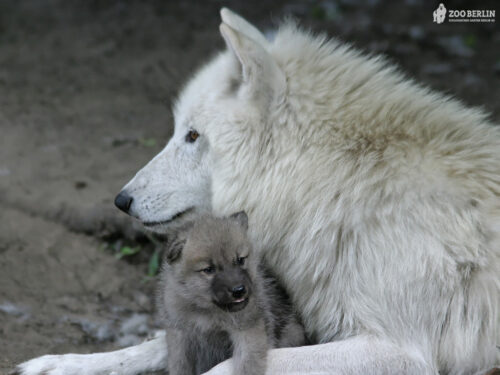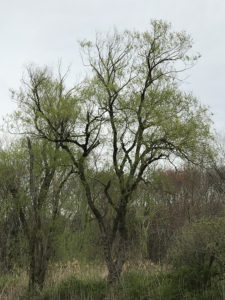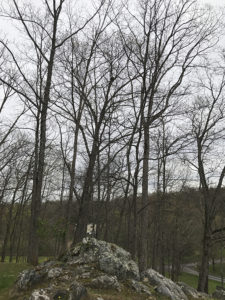
March and April have brought a confused aspect to spring. The groundhog never really gets it right, but I love the lore of it all. A March blizzard threw things completely out of whack. Before the blizzard there was this in my front yard.

Birds were visible, then seemed to go into hiding when the snow came. After the snow cleared, the natural order of things seemed to return—even if ‘natural’ may be a stretch: 45 degrees one day, 70 degrees another. Easter Sunday was a high of 80 degrees though the real what’s-wrong-with-this-picture was told by the trees, pretty much bare.


Noticeably missing was the subtle green chartreuse that encroaches a little more each day. It may be my favorite thing about early spring, the incremental change I get to witness.
There’s certainly some cruelty to April, being the month my mother died. But it’s Robert Frost who resonates even more deeply:
Nature’s first green is gold,
Her hardest hue to hold.
Her early leaf’s a flower;
But only so an hour.
Then leaf subsides to leaf.
So Eden sank to grief,
So dawn goes down to day.
Nothing gold can stay.
Early spring is nothing if not a reminder of how fleeting things are.
With renewal comes the reminder of all that’s lost to us.
Joy is a bubble, sadness carries weight. No escaping it. Bubbles are light. They float. Touch them too hard and they disappear.
A life well lived is one in which we pay attention—to the daily mysteries of changing seasons, to the people we care about, to whatever the world presents us with. I could easily enumerate the things in my life that give me joy but, on any given day, something heavier—a daughter feeling sick, a relative or friend in need or distress, my own personal challenges—gets in the way. Then there’s the world.
Is the cup half-full, half-empty, or always a little of both?
Don’t we often get the message we need when we most need it—assuming we’re not too closed off to receive it?
“While much psychology emphasizes the familial causes of angst in humans, the cultural  component carries as much weight, for culture is the family of families,” writes Clarissa Pinkola Estés in Women Who Run with the Wolves. A 25th anniversary edition, due out this year, tells me how long the book has been on my shelves. My curiosity about what myths and fairy tales bring to our consciousness, both in terms of story and archetype, may have been what first drew me to the book years ago. What prompted me to pull it from my shelf just the other day is more elusive.
component carries as much weight, for culture is the family of families,” writes Clarissa Pinkola Estés in Women Who Run with the Wolves. A 25th anniversary edition, due out this year, tells me how long the book has been on my shelves. My curiosity about what myths and fairy tales bring to our consciousness, both in terms of story and archetype, may have been what first drew me to the book years ago. What prompted me to pull it from my shelf just the other day is more elusive.
Or is it? I’m an older woman than I was when I first read snippets of the book, but maybe it’s something about the times in which we live that has me craving the call of the wild. What better way to combat the predator wolves at the door than reclaiming the wolf spirit within? It’s metaphor, yes, but the point is to trust the intuitive side of our nature, give it more expression. “Like the wolf,” she writes, “intuition has claws that pry things open and pin things down, it has eyes that can see through the shields of persona, it has ears that hear beyond the range of mundane human hearing.”
Margaret Atwood is much in the news these days, what with the Hulu mini-series of The Handmaid’s Tale airing at a time when the Oval Office stinks with oppression/repression/misogyny. “It’s the return to patriarchy,” says Atwood in a recent New Yorker profile. She also points out that “in any area of life, it’s push and pushback. We have had the pushback, and now we are going to have the push again.”
#WomensMarch, #ShePersisted, #PussyHat—we’ve only just begun, even if we never thought we’d be marching and fighting to protect and preserve what we’d already gained.
Sometimes when I sit down to meditate, I have the misfortune to see the face of an ugly man with orange hair. Takes some time before he slips out of my consciousness, but his mere presence calls to mind the predator archetype who lives in our psyche, as Estés tells it. Bluebeard, in the story she tells and takes apart, may be the epitome of the predator who, in fairy tales (and life), chooses his women for their easy acquiescence. He may not be handsome but he’s powerful and rich. One by one his brides fall into the trap of a curiosity that kills them. Until one comes along who has the presence of mind to outsmart him.
The titles of books interpreting fairy tales—The Uses of Enchantment (Bruno Bettelheim), Off with Their Heads! (Maria Tatar), From the Beast to the Blonde: On Fairy Tales and Their Tellers (Marina Warner)—speak worlds about their staying power and adaptability to changing times. Even Disney, with its formulaic charm and musical scores to tap our spirits, figured out that, for every fairy tale about a girl/woman saved by a prince there are countless others telling the story of how she saved herself, and others.

